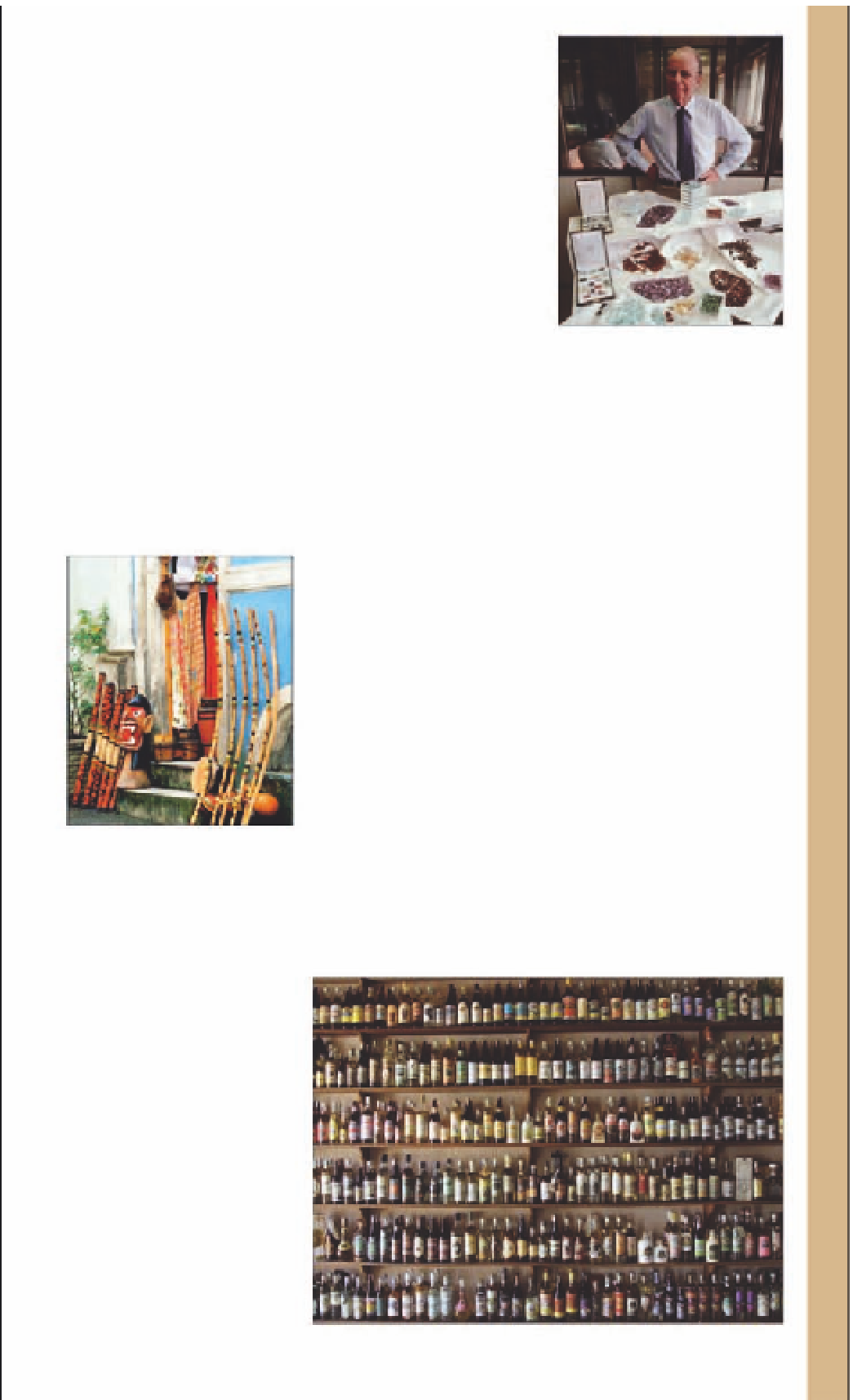Travel Reference
In-Depth Information
can also be found here. Ver o
Peso market in Belém
(see
p268)
and public markets in
Olinda (Pernambuco), as well
as Porto Alegre (Rio Grande
do Sul) are good examples.
Everywhere in Brazil, street
traders or
camelôs
sell goods
on improvised stands, or at
places called
camelódromos
.
A wide range of items, from
clothes to electronics of fairly
decent quality, are sold at
reasonably reduced prices.
It is possible for shoppers
to bargain at open-air mar-
kets. Vendors will often start
at double the price of prod-
ucts, but with a little skill
and some charm on the part
of the buyer, this can be
reduced. Be on guard in crow-
ded street markets, as pick-
pockets are not uncommon.
Be discreet when taking out
money to pay.
is found in all northeastern
states, while Pernambuco
and Bahia are famed for their
fine ceramics.
Woven items, hand-crafted
furniture, and Arraiolo
tapestry are popular in Minas
Gerais. In the south, Santa
Catarina's crystalware is
exceptional. In the state of
Rio Grande do Sul, it is worth
looking for good-quality
woolen items in Gramado
and Caxias do Sul.
GEMS
Salesman displaying gems, Howard
Stern Jewellers, Ipanema
Brazil has 60 percent of the
world's gem reserves. It is
the world's largest exporter
of rough-cut gems and the
sixth largest exporter of
worked gems. The variety and
quantity of precious stones
are spectacular. Amethyst,
citrine, diamond, emerald,
opal, and royal topaz are just
a few of the gems that Brazil
is famous for. Rough and
worked pieces can be bought
in the cities of Ouro Preto
(Minas Gerais), Cuiabá (Mato
Grosso), Salvador and
Chapada Diamantina (Bahia),
and Porto Alegre. Designed
jewelry can also be found in
these places, as well as in São
Paulo and Rio de Janeiro.
Although gems are largely
sold in open-air markets, it
is best to buy them at stores
offering origin warranty cer-
tificates, which gives the
weight (in carats), quality,
origin, and - in the case of
readymade jewelry - the char-
acteristics of any precious
metal used.
FOOD & DRINK
Brazil is known for its rich
variety of conserves, dried
fruits, and cakes
(see pp392-
3)
. Another favorite is fruit -
figs, citron ciders, pineapples,
and oranges - crystallized in
compôte. These delicacies
can be bought at public mar-
kets, craft centers, and con-
fectioners' shops, found
everywhere in Brazil.
An immensely popular
beverage,
cachaça
(sugarcane
liquor) is produced all over
the country and locally dis-
tilled
(see p393)
. The best
cachaça
comes from Minas
Gerais, Rio de Janeiro, Bahia,
Pernambuco, and Ceará. It
can also be bought at craft cen-
ters, local bars, and in hyper-
markets in the larger cities.
Excellent coffee and
gourmet blends are easily
available in all big cities in
Brazil. Look out for the ABIC
seal on the packets, as this
certifies the coffee quality.
Traditional musical instruments and
masks for sale in Bahia
ART & CRAFTS
Every region in Brazil has its
own distinctive handicrafts.
The use of specific raw mat-
erials makes every piece of
work unique. The best way
to buy these pieces is to go
directly to the
ateliers
. Tourist
information offices can pro-
vide the addresses. Craft
centers, where artists can be
seen at work, offer lower
prices than the upmarket
souvenir shops.
Typical Amazonian crafts
include indigenous masks,
jewelry, plume helmets,
basketwork, and bows and
arrows in Manaus, Belém, and
Santarém. Attractive replicas
of Marajoara pottery are sold
in Belém and the Ilha de
Marajó. Delicate lacework
Cachaça
emporium in Paraty, with a large array of different types for sale





































